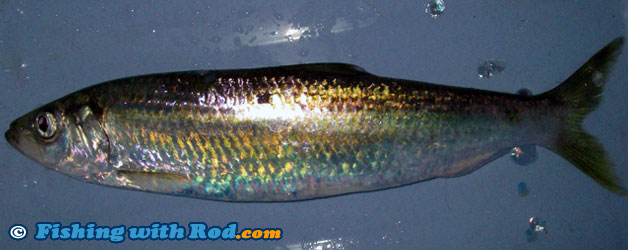Pacific Herring
Clupea pallasii

Pacific herring are found in the North Pacific Ocean, on both the West coast of North America and East coasts of Asian countries. They are baitfish that travel in large schools and are highly productive, therefore the health of fish that prey on them, such as Pacific salmon, is highly dependent on this keystone species. Since the early 1900s, Pacific herring has been a commercially important species. For decades, they were harvested and sold cheaply as animal feeds at first before becoming high prized exports to Japan for their eggs, until the fishery collapsed in the early 1990s. Since then, the stocks have recovered gradually. Pacific herring spawn in late winter and early spring, usually around the intertidal zone, on kelp beds and eel grass beds.
Anglers can catch Pacific herring by using a herring jig, which is made of several small hooks that are dressed with plastic or feathers. The jig is cast out and retrieved slowly with the occasional jerks. Quite often if the jig is brought through a school of fish, the lucky angler can find several herring at the end of his or her line. Pacific herring can be smoked, pickled or simply grilled. They are also excellent bait for targeting Pacific salmon in the ocean.
